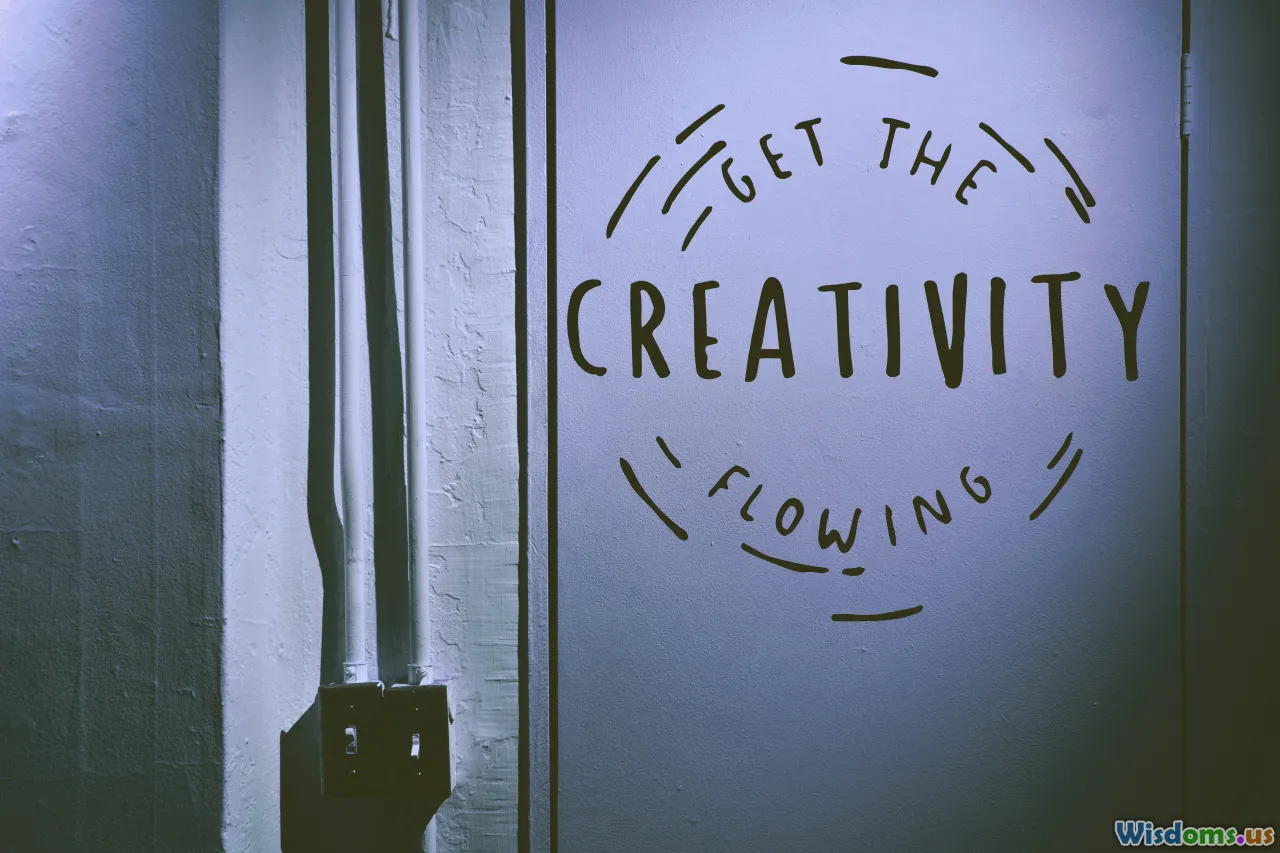
The Science Behind Mindfulness and Enhanced Consciousness
17 min read Explore how mindfulness shapes brain function and elevates consciousness through scientific research and practical examples. (0 Reviews)
The Science Behind Mindfulness and Enhanced Consciousness
In an era defined by rapid technological progress and relentless digital distractions, the pursuit of focused awareness is no longer just a spiritual endeavor—it’s a necessity for cognitive health. Mindfulness, once reserved for monks and mystics, is now a central topic in neuroscience and psychology. As science peels back the layers of ancient meditation practices, intriguing links between mindfulness and enhanced consciousness emerge. This exploration sheds light on the very mechanisms shaping how we think, feel, and experience the present moment.
Mindfulness Demystified: What It Is and Isn't

The term "mindfulness" is sometimes misconstrued as mere relaxation or positive thinking. This misconception can diminish its transformative potential. Mindfulness, at its core, is the act of purposefully paying attention to present-moment experiences with openness, curiosity, and acceptance. Rather than escaping thoughts or sensations, practitioners gently observe them, fostering a sense of witness consciousness.
One concrete example of mindfulness in practice is the "body scan" meditation, used widely in therapeutic contexts. Participants are guided to bring attention to different parts of their body, noticing sensations without judgment. This turns the body itself into a tool for cultivating awareness rather than repression.
It is crucial to differentiate mindfulness from mind-wandering or mindlessness. For example, losing oneself in a TV show or entering a flow state while painting seems similar, but these don't involve the conscious, deliberate attention that defines mindfulness. Instead, mindful awareness often means holding gentle focus even in the face of discomfort, which, paradoxically, can lead to profound calm and centeredness.
The Neuroscience of Mindfulness: Brain Rewiring in Action

Maybe most compelling among recent breakthroughs is the mounting evidence for the brain’s remarkable adaptability—or neuroplasticity—in response to mindfulness training. Functional magnetic resonance imaging (fMRI) and electroencephalogram (EEG) studies have confirmed that even brief regular meditation alters the brain.
Gray Matter Density
Research from Harvard University found that eight weeks of Mindfulness-Based Stress Reduction (MBSR) training led to increased gray matter density in the hippocampus (essential for learning and memory) and other brain regions tied to emotion regulation. The participants weren’t veteran yogis—many were brand new to meditation, suggesting mindfulness triggers neurobiological shifts surprisingly quickly.
The Default Mode Network (DMN)
When we let our minds wander, much of the mental activity cycles through a circuit called the Default Mode Network (DMN)—the brain’s “autopilot” where daydreaming and rumination live. Studies show meditators develop stronger connections between regions that regulate self-referential thinking, leading to less DMN activity and more presence. Remarkably, this correlates with improved emotional regulation and reduced anxiety or depression.
Example: Mindfulness in Therapy
Mindfulness-based cognitive therapy (MBCT) employs meditation to help patients reinterpret negative thoughts without getting swept away by them. This neuroscientific underpinning helps explain MBCT’s successful use in preventing depressive relapse—a concrete illustration of how brain changes translate into lasting emotional skill.
How Mindfulness Heightens Consciousness

Beyond its neurological underpinnings, mindfulness exerts profound effects on human consciousness itself. But what does it mean to have "enhanced consciousness"? Rather than referring to mystical states, here it describes an increased capacity to observe one's thoughts, emotions, and sensory inputs with clarity.
Four Levels of Conscious Awareness
- Autopilot: Tasks occur with little awareness (e.g., commuting while lost in thought).
- Focused Awareness: Full attention on a task (like solving a complex puzzle).
- Reflective Self-awareness: Conscious observation of one’s own mental states.
- Metacognitive Consciousness: Awareness that one is aware; a meta-view on thoughts and feelings.
Mindfulness exercises encourage progression through these levels. For example, in a mindful eating practice, participants note every nuance of texture,-flavor, and sensation as they eat, elevating a mundane act into an illuminating exploration of sensory experience. Over time, these practices refine one’s ability to "catch” thoughts before reacting or making judgments—one hallmark of heightened consciousness.
The Benefits That Go Beyond Relaxation

Mindfulness training delivers a suite of physical, emotional, and cognitive benefits, many supported by robust empirical evidence.
Stress Reduction
One of the earliest and most well-documented advantages is the reduction of stress markers such as cortisol and blood pressure. For example, a 2016 meta-review spanning over 35 trials found significant decreases in stress and anxiety among MBSR participants compared to control groups.
Resilience and Emotional Balance
By learning to observe emotions as passing phenomena, practitioners become less likely to be hijacked by anger, sadness, or fear. Elite athletes, CEOs, and artists alike incorporate brief mindfulness sessions to remain calm and focused amid high-pressure situations. Olympian Michael Phelps credited visualization and mindfulness for helping him excel under global scrutiny.
Cognitive Enhancement
Mindfulness also boosts core executive functions like working memory, attention, and cognitive flexibility. A University of California, Santa Barbara study showed just two weeks of mindfulness practice improved working memory and reading comprehension among undergraduate students.
Example: Schools and Education
Recognizing these effects, school districts worldwide now include mindfulness modules in curricula, reporting fewer behavioral incidents and better academic performance. For instance, the MindUP program, used in over 1,000 schools globally, integrates brain science with mindful breathing to foster calm and focused classrooms.
The Physiology of Mindful Awareness

Mindfulness doesn't just influence the mind; it organizes our bodily physiology. Regular practice alters the autonomic nervous system, shifting the balance from the stress-activated sympathetic to the restorative parasympathetic system.
Reduced Physiological Stress
Lab studies have recorded lowered heart rates, decreased muscle tension, and healthier patterns of breath in mindfulness practitioners—mirrored by their self-reported feelings of ease. The practice of breath-awareness, such as lengthening the exhale, leverages direct biofeedback mechanisms to quiet the body’s alarm systems.
The Vagus Nerve Connection
The vagus nerve, dubbed the body's “superhighway to calm,” is activated by mindful breathing and relaxation techniques. Stimulation of this nerve underlies the calming influence on heart rate variability, linking physiology and mood. Simple practices, such as guided breathing at 5–6 breaths per minute, can measurably enhance heart rate variability and resilience under stress.
How-To: Building a Mindfulness Practice

The science is compelling, but translating insight into daily life can feel daunting. Here’s a practical, science-backed roadmap for anyone seeking to develop a regular mindfulness routine:
Step 1: Start Small
Set aside 5 minutes each morning—or, if that's too much, just a mindful minute. Sit comfortably, close your eyes, and focus on your breath or sounds around you.
Step 2: Use Guided Support
Many smartphone apps (e.g., Headspace, Calm, Insight Timer) provide structured guidance, making it easier to build consistency and track progress. The UCLA Mindful Awareness Research Center offers free meditations and research-based templates for beginners.
Step 3: Practice Informally
Integrate mindfulness into routine activities: eating, walking, or even waiting in line. For instance, practice the STOP exercise:
- S: Stop and pause
- T: Take a breath
- O: Observe thoughts and sensations
- P: Proceed with intention
Step 4: Track and Reflect
Journaling after mindfulness sessions enhances awareness of subtle changes. Noting moments when mindfulness helps diffuse stress or brings clarity reinforces the value of practice.
Step 5: Build Community
Seek group or classroom sessions, virtual or in-person. Research confirms people who meditate with others report higher accountability and positive outcomes—reflecting the social dimension of consciousness.
Mindfulness in Professional and Creative Life

While the personal health benefits are well-known, mindfulness is also transforming how organizations foster innovation and navigate complexity.
Corporate Mindfulness Initiatives
Global firms like Google, Intel, and Aetna offer workplace mindfulness programs that train employees to respond rather than react. Aetna found that participating staff reported, on average, a 28% reduction in stress and productivity gains valued at $3,000 per employee per year.
Fostering Creativity
Studies at the University of Groningen have shown that even brief mindfulness sessions can increase idea-generation during brainstorming tasks. This is partly attributed to the reduction in cognitive rigidity; by observing thoughts without attachment, creative solutions emerge more freely.
Decision-Making
Mindfulness potentiates non-reactive, clear-eyed contemplation. In high-stakes fields like medicine, military, and emergency services, teams now embed mindfulness training alongside technical skills to help individuals maintain calm and clarity during crises. For instance, a pilot program at Massachusetts General Hospital found that staff who were trained in mindfulness displayed fewer medical errors and reported less burnout.
Comparing Mindfulness to Other Cognitive Training Techniques

How does mindfulness stack up against other modalities designed to boost mental performance and awareness? Let’s compare:
Mindfulness vs. Cognitive Behavioral Therapy (CBT)
While CBT targets specific habitual thought patterns and reprograms responses, mindfulness creates an environment of acceptance for any thought or feeling, reducing attachment to all mental content. Both are effective for stress, anxiety, and depression, but mindfulness especially excels in preventing relapse and deepening metacognitive skills.
Mindfulness vs. Brain-Training Apps
Popular “brain games” promise sharper memory or logical skills but often lack evidence for broad, transferable improvements. Conversely, mindfulness training has been linked to more generalizable gains—like reduced distractibility, improved emotional regulation, and heightened self-awareness. For example, a 2015 meta-review in Psychological Science found little evidence that app-based cognitive training improved daily functioning, while mindfulness training did.
Mindfulness vs. Psychopharmacology
While medications for depression or anxiety can be life-changing, mindfulness offers a non-pharmaceutical alternative—or complement—that fosters agency and insight with no side effects.
Addressing Common Criticisms and Barriers

Despite substantial evidence, skepticism remains. Critics say mindfulness is often commercialized or oversold as a panacea. And for some, sitting still with their thoughts evokes discomfort or anxiety, acting as a barrier.
Valid Critiques
- Superficial Application: Mindfulness isn’t a cure-all. For trauma survivors, intensive practices may sometimes be counterproductive and should be guided by a skilled professional.
- Cultural Appropriation: Decontextualized mindfulness can miss the ethical foundations emphasized in traditional contemplative traditions, where non-violence and compassion are central.
Overcoming Obstacles
- Discomfort: Normalize initial reluctance. Remember, mindfulness is as much about observing discomfort as enjoying calm.
- Consistency: Habit change science shows that linking mindfulness to existing routines (like brushing teeth) greatly increases adherence.
- Expectations: Evidence shows benefits accrue with patience and openness, not with rigid expectations about outcomes.
Tips for Integrating Mindfulness into Everyday Life

Turning mindfulness into a way of life needn’t require hours on the mat. Here are science-backed tips for weaving awareness through the mundane:
- Pause before responding: In meetings or tough conversations, take one breath before answering. This creates a gap between impulse and action—a core doorway to conscious living.
- Tech-free moments: Protect a few minutes in your day without screens or background noise. Notice how sensory priorities shift.
- Gratitude rituals: Connecting mindfulness with thankfulness amplifies well-being, as proven in studies from the Greater Good Science Center at UC Berkeley.
- Movement practices: Walking, stretching, or mindful yoga count—movement is an ally to sustained attention.
- Transitions: Use habitual transitions (getting into your car, washing hands) as mindfulness cues.
As research continues to uncover how mindfulness molds brain, behavior, and biology, its time-honored practices are gaining fresh credibility and new applications. Ultimately, the science points not just to effortless calm or reduced stress, but to the possibility of a richer, more aware engagement with the world—a journey toward enhanced consciousness that is as much about science as it is about human experience.
Rate the Post
User Reviews
Popular Posts



















